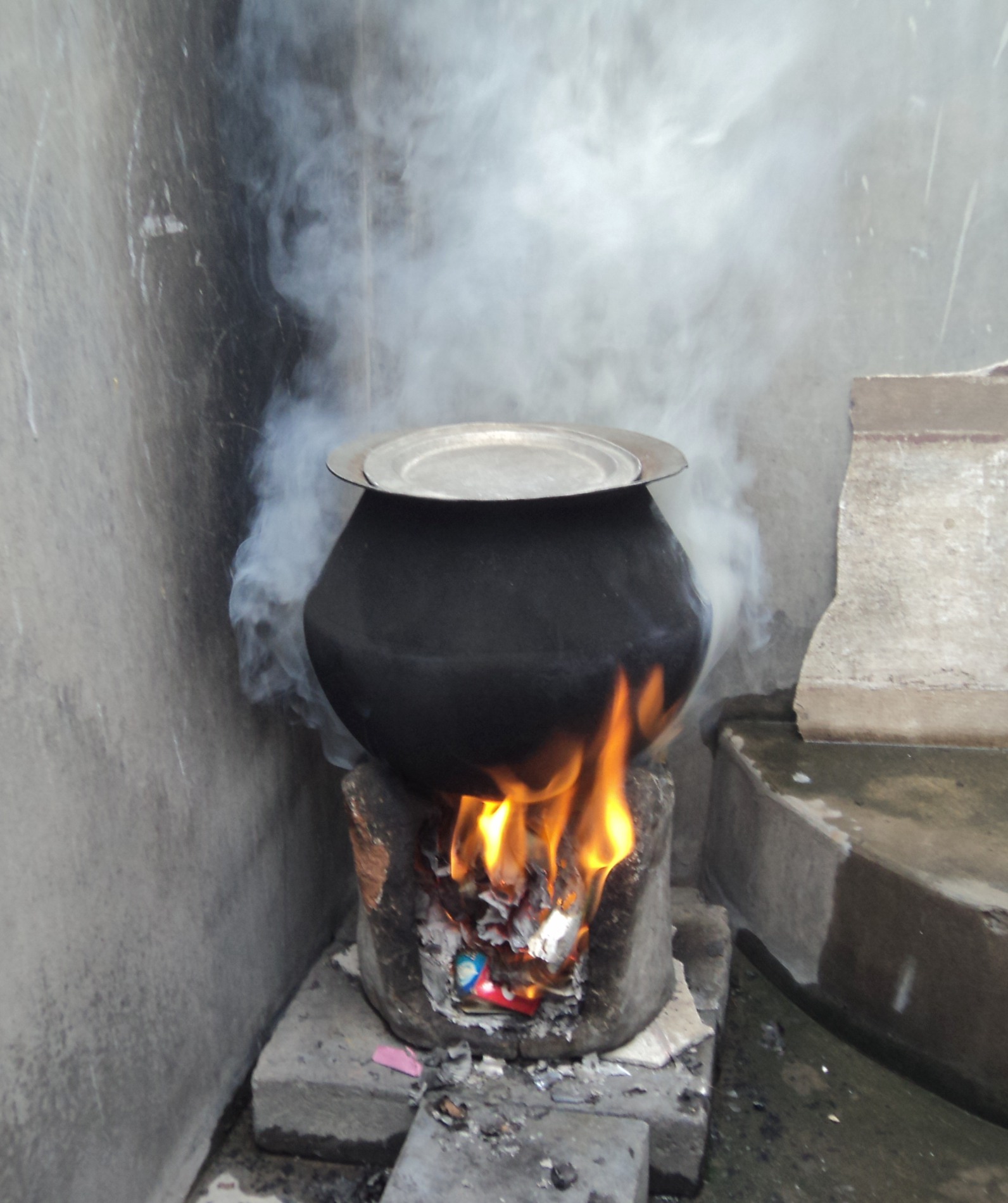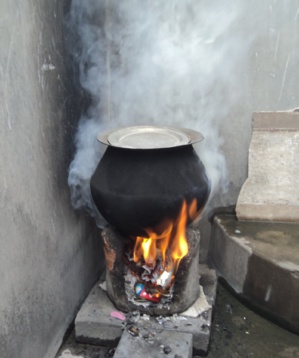The menace of indoor air pollution has long been a bane in Asia, and India with its large rural population’s reliance on traditional fuel, is carrying the lion’s share of this burden.
Rural households affected
As per available census data collected by the Government of India in 2011, 75 million of its population concentrated mostly in rural areas, have no electricity, while 142 million households mostly in rural villages, are totally dependent on biomass, such as firewood and cow-dung for fuel.
This is despite several heavy subsidies by successive governments since 1985. In spite of these efforts cleaner fuel alternatives such as LPG are beyond the reach of millions of rural households who still struggle to make a living and are forced to opt for traditional fuel for cooking purposes. These traditional fuels, as per an estimate is approximately 135 million tons (MTOE), which is the equivalent Australia’s total energy consumption in 2013.
“It takes us five to six hours to gather what we need each day – we have to travel far into the woods to collect it. But we don’t mind, since we don’t have to pay for it,” says Kehmli Devi, a native from the Chachadeth.
With her monthly income of around $57, even a subsidized liquefied petroleum gas (LPG), is beyond her reach. This story is not unique to her, the same story applies to almost every household in almost every village.
The problem is that the improper burning of such fuel in confined spaces is extremely harmful to humans, because doing so causes the release of dangerous air pollutants, known as HAPs, as well as the release of volatile organic compounds (VOC) and fine ash particles which are detrimental to human health.
As per WHO estimates more than 4.3 million die from diseases, such as strokes, lung cancer and pneumonia, which can be attributed to indoor air pollution. Women and children are most susceptible to it as they are exposed more often and for longer durations.
Cleaner alternatives
Needless to say, that the usage of cleaner fuel sources will reduce these numbers and correspondingly reduce the incidents of diseases caused by indoor air pollution. It also provides a side benefit since the usage of cleaner fuel, such as LPG, will mean that households will not have to go collect and prepare the biomass for fuel purposes, in case of cow-dung, which will leave them with more spare time, in which they can pursue their education or get some employment. Both of these twin benefits, will significantly contribute to the eradication of extreme poverty which is part of the UN’s Millennium Development Goals (MDGs).
In the upcoming climate talks in Paris too, wherein world leaders will meet to discuss ways in which they can make binding contributions to the reduction of carbon emissions in the next decade, the provision of clean energy for the poor will be on agenda, as per Veerabhadran Ramanathan, the director of the Centre for Atmospheric Sciences, Scripps Institution of Oceanography, University of California.
As per Mr. Ramanathan it is the responsibility of the ‘top four billion’ rich countries to help the ‘bottom three billion’ (B3B) poor countries climb the renewable energy ladder. He said, “In order to avoid unsustainable climate changes in the coming decades, the decarbonisation of the T4B economy as well as the provision of modern energy access to B3B must begin now.”
His thoughts find a common voice in myriad international initiatives, including from the Global Alliance for Clean Cookstoves (GACC), which aim to cut dirty carbon emissions from household fuel. As per estimates from the GACC, the transition to clean fuel is likely to result in reduced emissions by as much as 17%.
References:
http://www.ipsnews.net/2015/03/in-india-an-indoor-health-crisis/
Rural households affected
As per available census data collected by the Government of India in 2011, 75 million of its population concentrated mostly in rural areas, have no electricity, while 142 million households mostly in rural villages, are totally dependent on biomass, such as firewood and cow-dung for fuel.
This is despite several heavy subsidies by successive governments since 1985. In spite of these efforts cleaner fuel alternatives such as LPG are beyond the reach of millions of rural households who still struggle to make a living and are forced to opt for traditional fuel for cooking purposes. These traditional fuels, as per an estimate is approximately 135 million tons (MTOE), which is the equivalent Australia’s total energy consumption in 2013.
“It takes us five to six hours to gather what we need each day – we have to travel far into the woods to collect it. But we don’t mind, since we don’t have to pay for it,” says Kehmli Devi, a native from the Chachadeth.
With her monthly income of around $57, even a subsidized liquefied petroleum gas (LPG), is beyond her reach. This story is not unique to her, the same story applies to almost every household in almost every village.
The problem is that the improper burning of such fuel in confined spaces is extremely harmful to humans, because doing so causes the release of dangerous air pollutants, known as HAPs, as well as the release of volatile organic compounds (VOC) and fine ash particles which are detrimental to human health.
As per WHO estimates more than 4.3 million die from diseases, such as strokes, lung cancer and pneumonia, which can be attributed to indoor air pollution. Women and children are most susceptible to it as they are exposed more often and for longer durations.
Cleaner alternatives
Needless to say, that the usage of cleaner fuel sources will reduce these numbers and correspondingly reduce the incidents of diseases caused by indoor air pollution. It also provides a side benefit since the usage of cleaner fuel, such as LPG, will mean that households will not have to go collect and prepare the biomass for fuel purposes, in case of cow-dung, which will leave them with more spare time, in which they can pursue their education or get some employment. Both of these twin benefits, will significantly contribute to the eradication of extreme poverty which is part of the UN’s Millennium Development Goals (MDGs).
In the upcoming climate talks in Paris too, wherein world leaders will meet to discuss ways in which they can make binding contributions to the reduction of carbon emissions in the next decade, the provision of clean energy for the poor will be on agenda, as per Veerabhadran Ramanathan, the director of the Centre for Atmospheric Sciences, Scripps Institution of Oceanography, University of California.
As per Mr. Ramanathan it is the responsibility of the ‘top four billion’ rich countries to help the ‘bottom three billion’ (B3B) poor countries climb the renewable energy ladder. He said, “In order to avoid unsustainable climate changes in the coming decades, the decarbonisation of the T4B economy as well as the provision of modern energy access to B3B must begin now.”
His thoughts find a common voice in myriad international initiatives, including from the Global Alliance for Clean Cookstoves (GACC), which aim to cut dirty carbon emissions from household fuel. As per estimates from the GACC, the transition to clean fuel is likely to result in reduced emissions by as much as 17%.
References:
http://www.ipsnews.net/2015/03/in-india-an-indoor-health-crisis/






